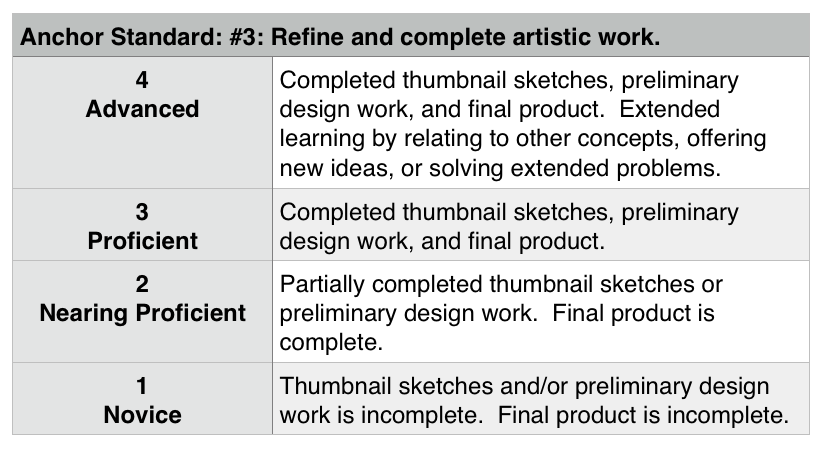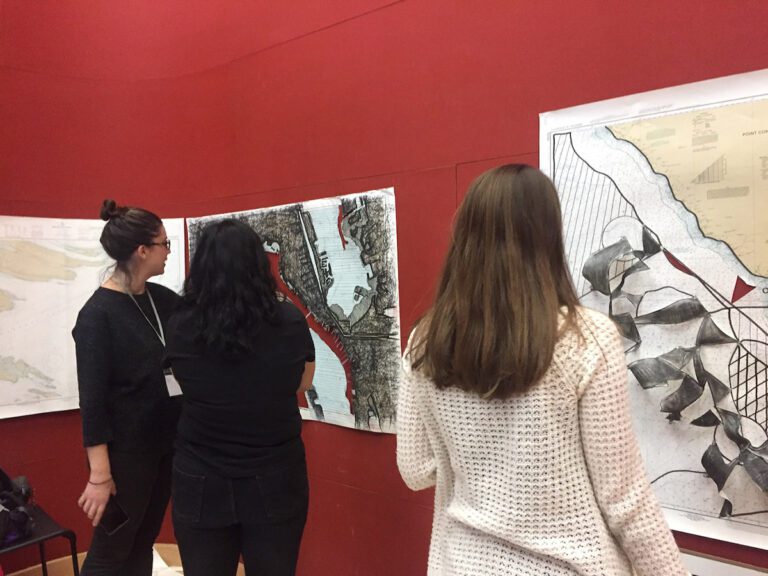
Today we welcome a guest post by AOE’s Educational Director Heather Crockett who is going to let us in on a rubric secret…rubrics aren’t all bad! Read on to learn more!
Rubrics get a bad rap. They can easily be touted as subjective, creatively stifling, or a waste of precious art time. I get it. And, I will be the first one to admit that there are horrible rubrics out there that teachers are using and that meet the descriptions above. In many situations, we are mandated to use rubrics, but rarely trained how to effectively create or select them.
What is an art teacher to do!?
One way to make sure you have a solid rubric is to create a rubric based on a standard. You could use the new National Visual Arts Standards, State Standards, or Benchmark/Frameworks from your district. Whatever standard you select, be sure to add descriptive elements that clearly provide a full range of outcomes for that particular standard.

For example, in the rubric above, I focused on Anchor Standard #3: “Refine and complete artistic work,” from the new National Visual Art Standards. This rubric could be used for almost any project where students are working on brainstorming, refining revisions, or designing prototypes.
Beside each level, I included text that describes what student work would look like. You want these descriptions to be detailed and observable in order to remove bias. It also helps to keep your descriptions student-friendly so you can share rubrics with your students at the beginning of the lesson. If I was a student, I would want to know the expectations from day one, wouldn’t you?
However, there is so much more to rubrics that just this one tip!
If you’d like even more information about writing meaningful and useful rubrics, be sure to sign up for the AOE Summer 2015 Conference where I’ll be presenting The 5 Things Every Art Teacher Should Know Before Creating A Rubric.
I’ll give you the tools, training and confidence you need to create your own rubric from scratch or tweak an existing rubric (like my example above) to use in your classroom.
Although rubrics can seem daunting, a well-developed rubric can help you communicate expectations with students, set goals, demonstrate growth and even advocate for you program. Please consider giving rubrics a second chance!
What questions do you have about rubrics?
Do you have a great rubric writing tip to share?
Magazine articles and podcasts are opinions of professional education contributors and do not necessarily represent the position of the Art of Education University (AOEU) or its academic offerings. Contributors use terms in the way they are most often talked about in the scope of their educational experiences.




